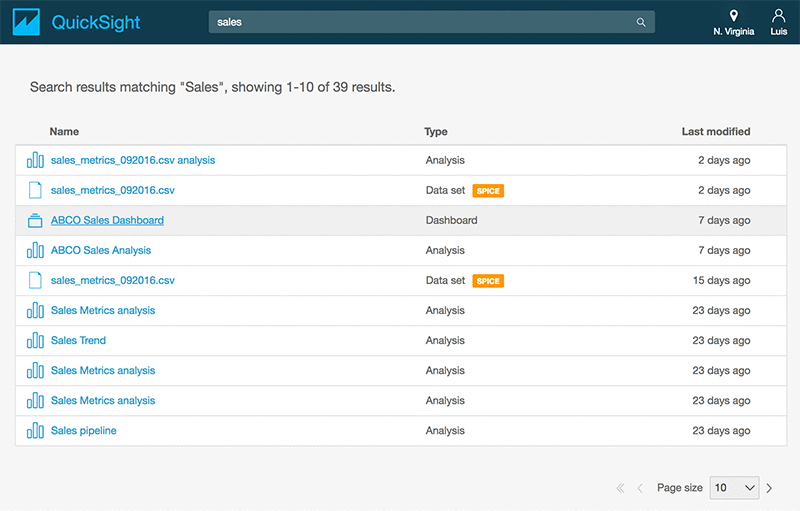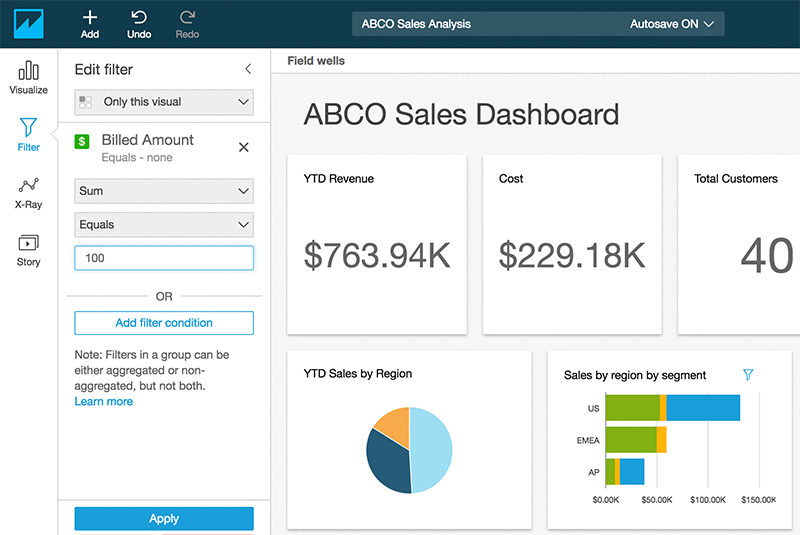AWS Big Data Blog
Amazon QuickSight Now Supports Search, Filter Groups, and Amazon S3 Analytics Connector
Today, I’m excited to share information about some new features in Amazon QuickSight. First, you can now search for datasets, analyses, and dashboards in Amazon QuickSight using the unified search box, making it faster and easier to find and access your data. Next, you can now create filter groups with multiple filter conditions that are evaluated together using the OR operation. Finally, you can now use the built-in Amazon S3 analytics connector to visualize your S3 storage access patterns across multiple S3 buckets and configurations within a single Amazon QuickSight dashboard to optimize for cost.
Search
You can now easily and quickly find and access your datasets, analyses, and dashboards using the unified search box in Amazon QuickSight. Type in what you’re looking for and you get a list of all matches in a unified view. From there, you can take actions such as creating an analysis from a dataset, modifying a dataset, or accessing an analysis or dashboard.

Filter groups
Filters are one of the most important features in Amazon QuickSight. Before this release, you could create multiple filters that were evaluated using the AND operation. With this release, you can now create multiple filters that are evaluated using the OR operation. This provides you with the flexibility to apply more complex filters to your data and visualizations. For example, you can create a chart that shows customers who have spent less than $100 OR made three or more purchases.

Amazon S3 analytics connector
In July, AWS introduced the ability to analyze and visualize your Amazon S3 storage access patterns using Amazon QuickSight in one click from the S3 console. Today, AWS released a dedicated S3 analytics connector in Amazon QuickSight. This connector allows you to import S3 analytics data for different buckets and configurations into a single Amazon QuickSight dataset. With this dataset, you can then create analyses and dashboards that tracks all of your S3 usage patterns in a single view.

Learn more
To learn more about these capabilities and start using them in your dashboards, see the Amazon QuickSight User Guide.
Stay engaged
If you have questions or suggestions, you can post them on the Amazon QuickSight discussion forum.
Not an Amazon QuickSight user?
To get started for FREE, see quicksight.aws.